
Kamijo is an atypical musician in the current visual kei world and in the music world. Like many he tells stories in his songs but on that side he goes much further in the process. Each song tells a story, but above all it is part of a cycle of songs that tell a much longer and more important story. Some artists make concept albums that tell a story, like the sublime "The story of Melody Nelson" by Gainsbourg or "The Wall" by Pink Floyd, It's a recurring thing in the music world, but Kamijo universe is therefore much more marked ...
In each of its groups there has always been a more or less important narrative, the involvement of the other members in the concept plays a lot. Within LAREINE the storyline was very developed, in Versailles a little less. In his solo the plot of the story is essential.
The problem when you are not Japanese and even less Japanese-speaking is to understand all these things. Certainly there are translations of the lyrics on many sites but the artist is complex, he does not reveal everything in his lyrics. They are certainly essential but they are only part of the story, there are some Pamhlets dedicated to storytelling, in Japanese of course, even if the "Epic Rock Orchestra" of 2017 is in English, the clues given in interviews and the concerts themselves. In 2016, artist Kaya served as a narrator during concerts. The setlist is important, the order of the songs can change the meaning, the same song played before or after another can take on a very different meaning in the narration. It is therefore very complicated if you are not Japanese and if you do not attend all the concerts or without having the setlists to follow everything. Besides that he reveals in interviews in Japanese ...
However, there is still a framework that can be deciphered with the help of devoted souls who translate things, Crystal Scherzo's blog, Louise and her Tumblrkamijoversaillestheories, Merithorus Slifer on Facebook via Kamijo France or Satine in his subtitled videos and I pass the many people who translate on Nautiljon. So I'm going to try to transcribe all this in the different chapters that punctuate Kamijo's career and their different stories ... and if in the end all these stories were one ... even if the year 2018 has saw a major revolution with the publication of the story in Japanese on his blog ameba (but we can translate the general idea of ??things with google) much more narrative pamphlets, an album with a large part of the songs in English and concerts also much more worked around the history which is clearly stated there. The European tour also benefited from this quality with a narration in English!
In the fall of 2015, Vyper magazine gave us a very interesting interview on this facet of the author / composer / performer. Finally questions about the work itself, we learn different things ... A PDF of this interview with Aurélie Amoretti was also viewable with a beautiful illustrated layout:
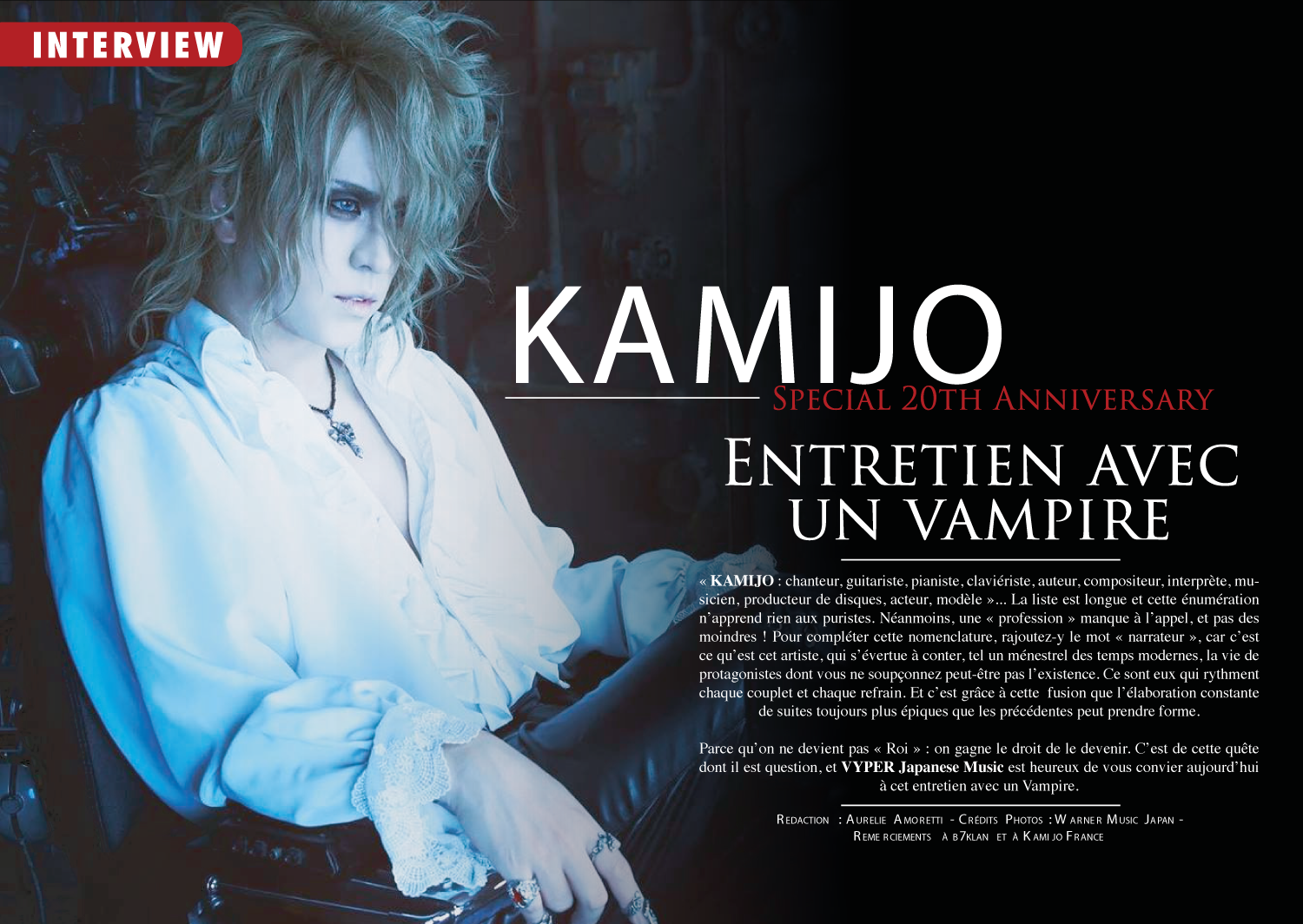
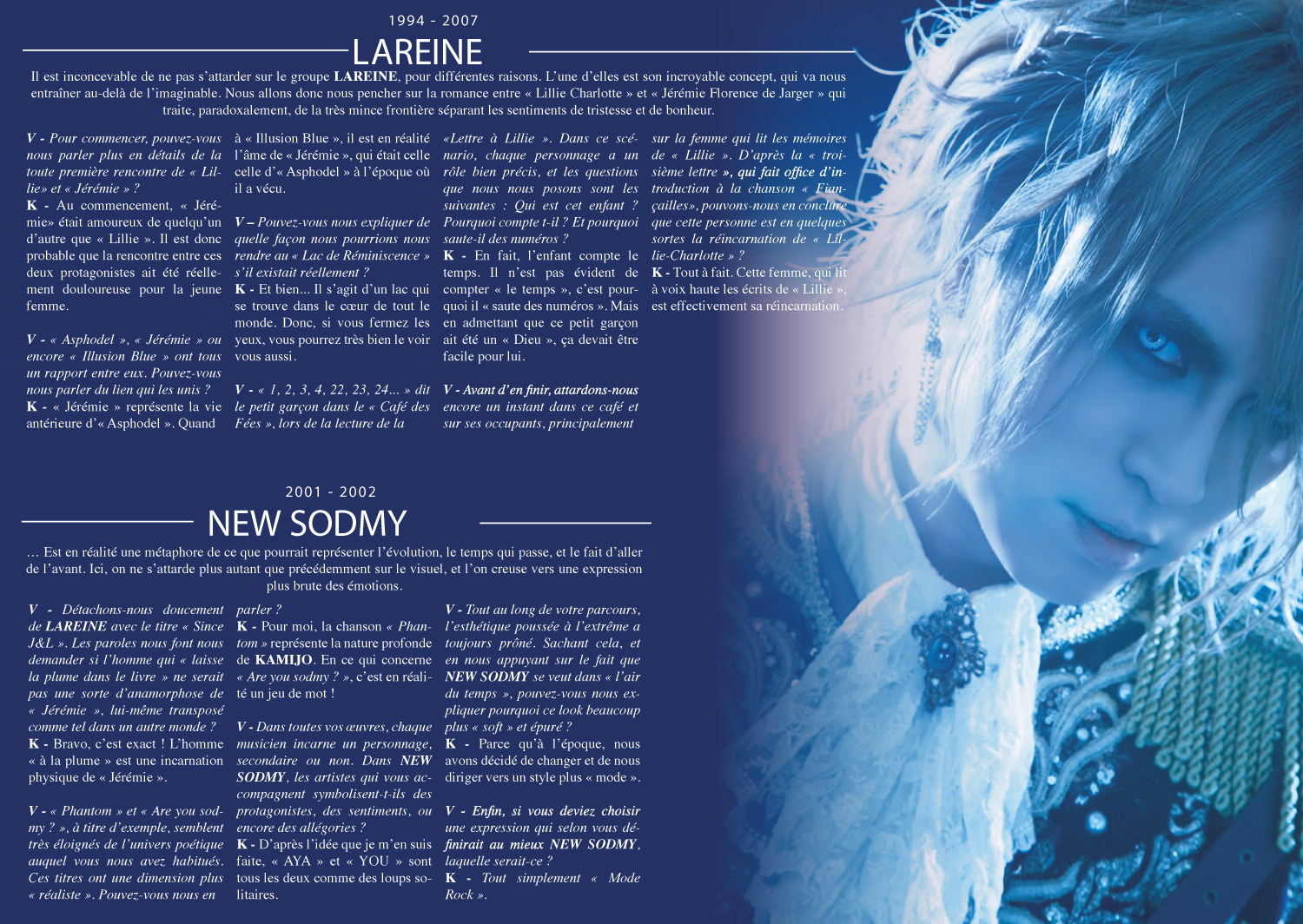
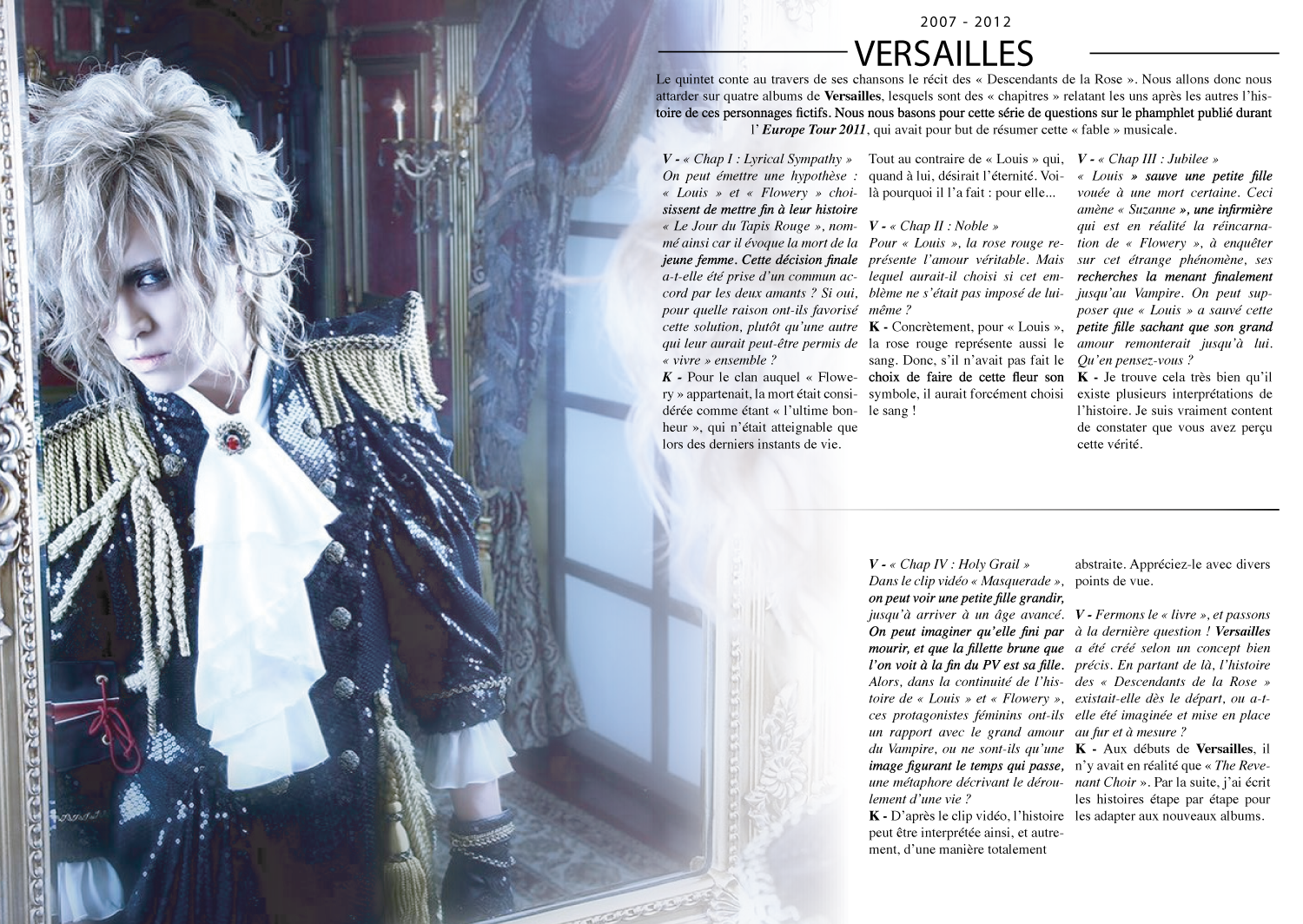
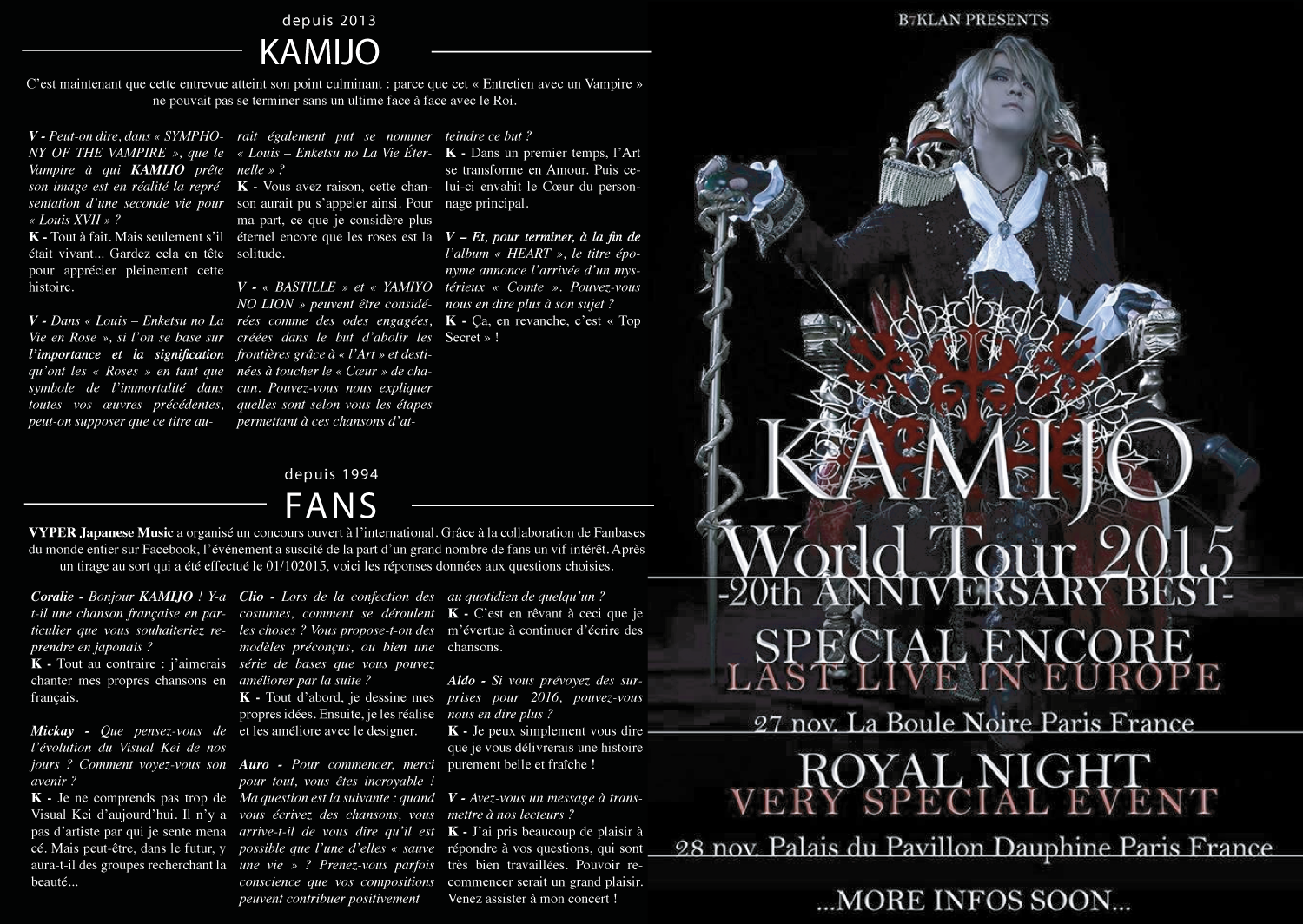
January 2018, a complete revolution takes place, Kamijo himself has decided to divide his story in several chapters with a full and detailed narration. Finally he delivers everything. He does it on his Ameba blog, a medium he uses very little. It started on January 23, 2018 and publishes several chapters per day, for example 4 chapters on January 25. The publications have stopped at 18 chapters, plus the prologue, or 19 paragraphs to date. So we finally have an official narration of the Solo whose translation is done as very often by Louise de Kamijo Versailles Theories, but also by Merithorus Sliffer who brings subtle variations (Kamijo Part 1 - Kamijo Part 2). This official version delivers other clues that are not in the lyrics of the songs, it's quite interesting to see that the story and the lyrics complement each other. The narration delivers a chronological and factual story, the songs deliver the feeling of the events at the moment when they are experienced.
To return to the previous groups, they all tell a different story, to discover them you just have to open the right book below. It is not impossible in the long term to see the stories of LAREINE, Versailles and Solo to link, we will see in time.
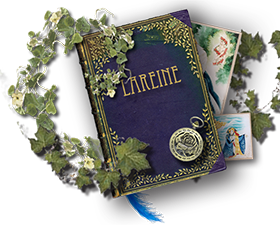
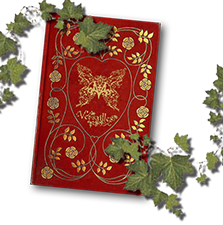

In my research and analysis of Kamijo's stories, I have perceived different references, symbols and images that come back and that seem important.
Kamijo's little inner world seems to be nourished by lots of things, stories and references that it accommodates and assembles to make its own story.
The artist very often cited the manga of Ikeda in the interviews, he also refers to the mangaka on his official site on the page of his profile, which includes a link to a page which dates from the time of LAREINE where are presented the illustrations made of the group and Kamijo by Ikeda. Given his age and having seen all these references, he read the manga, he may also have seen the anime.
If we look at Lillie Charlotte from an Ikedian angle, everything takes on a different dimension. Basically this CD is a real reference to Ikeda, by the recovery of Barawa and share the name of Jeremie Florence de Jarjers ... but not only ... Lillie in her character is the graceful girl but no a fabulous beauty, in love, transits from Oscar's clone that she admires and secretly loves ... Lillie = Rosalie.
Knowing that in the manga Rosalie spent a fair amount of time with the Jarjayes, that she arrived there quite young, she spent a lot of time rubbing shoulders with Oscar, hopelessly admiring him ... like Lillie and Jérémie ...
Charlotte = Charlotte de Polignac is Rosalie's half-sister, she is also in love with Oscar and commits suicide to escape forced marriage. I pass on the hairstyle and the allure of Charlotte de Polignac at her death ... which recalls the allure of Lillie from the photos of the book ... If we still refer to the manga, Jérémie was in love with another person who didn't love her, Oscar and Fersen ... we mention pneumonia for Lillie's death in the album "Pride no Umi", Oscar was sick with lungs. In the anime André has emerald green eyes, like Lillie ... and the impossible love of the two can also evoke the impossible love of The Queen and Fersen at the same time. Many important moments of the anime are by the sea, like the images of Oscar and André reunited and in love at the end of the series by the sea ... the sea is also very present in "le Vent Express" and "Pride No Umi" is where lovers of LAREINE's history meet and separate.
We find a character of the same pace as Lillie in the film which begins the series "Albator 84" (Captain Harlock in Original Version), it is the love of Albator, the voice of freedom. She is blonde, wearing a simple white dress and their love is pure and tragic. Like Lillie, she dies in the arms of her love ...
It's as if Kamijo had mixed all these things to feed his characters ...


Another source of inspiration and not least, Anne Rice. We know that he is a fan of the character of Lestat, and many images show us a Kamijo very close to the images of the film. Without counting many other common points with the work of Rice, like the character of the little girl in Ascendead Master which evokes without any doubt Claudia. In 2018 he released a title called "Vampire Rock Star" which reminds me of the rock star career of Lestat. The album Sang evokes Egypt and the pyramids, and also Napoleon, in the books of Anne Rice, the source of vampires is in Egypt with Ashaka and Enkil.


Roses are also an important element in the artist's universe. Looking at his many costumes, you can see that there are many who have a pattern of roses in the fabric, whether printed or in the weaving of the jacquard pattern. Whether it is the blue coat of "Engagement", the black of "Lyrical Sympathy", the red jacket of "Holly Grail" is printed with large red roses. More recently the cape of "Symphony of the Vampire" is printed with red in its lining.
In LAREINE's time the flower also adorned CD or K7 covers.
In his shows as in his videos, often there are red roses (or sometimes blue in LAREINE's time) in bloom decorating the stage, the drums and his microphone or in rain of petals. The Versailles group wove its history and songs around the history of the "Descendants of the Rose" and almost always wore a rose on its costume. A universe made up of romanticism and tragic or annoyed love stories. Louis' emblem in Versailles and a red rose. In the time of LAREINE Kamijo was a blue rose.
When he starts his solo, his first song is "Louis ~ Enketsu no La Vie en Rose ~", in the video of the song we see Mana, legendary leader of the group Malice Mizer for which Kamijo was roadie in his youth before founding a group, so we see Mana holding a red rose in her hand and the rose turns blue. As a symbol of homecoming for the artist who in his solo finds sounds, universes that were already present in LAREINE's time. The blue rose returns to Kamijo, printed on the disc of the single "mademoiselle", on the visual display of the new album "Sang" scheduled for March 2018 ... ah March ... March 26 has often been a date of release of single or album from the time of LAREINE, because it is the day when the group officially took stage its definitive name ... the man is attached to symbols ... like that of the lily which returns from time to another in his universe. Very strongly present in LAREINE's time, the lily was Mayu within the group and also Lillie within the story ... we sometimes see this flower appear in videos, as in "Aristrocrat's Symphony" where we can see a bouquet of white lilies in the chapel where Louis gives death to Flowery ... more recently in the clip of "mademoiselle" where a bouquet of lilies adorns the places where the vampire is ... without forgetting the symbolism of the lily of France emblem of the King ...
To finish in the symbols and in the lily, here is a small visual analysis of the logo of Kamijo's solo, the Emblem Cross. It is a perfect synthesis of the stylized royal fleur-de-lis and the bat which symbolizes the vampire. The petals are inverted and at the top they are vampire wings and below the fangs that point.
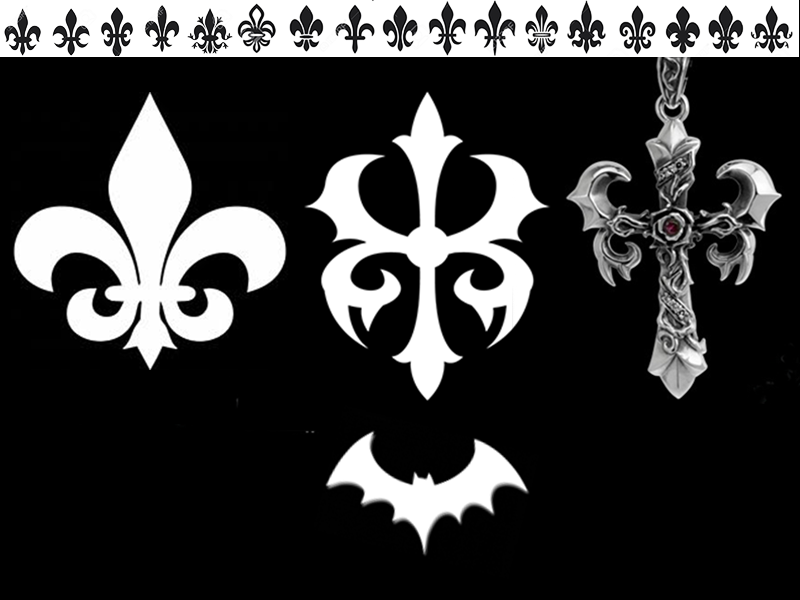
It is therefore a universe rich in symbols and references that I invite you to discover with me, because I never stop discovering things ... it is a fascinating world that this artist delivers to us and that I try to share here as best as I can given the complexity of accessing the documents ... but you can always simply appreciate the work without worrying about the story with the music and what it gives off, and there is no need to 'analyzes and translations because music is universal !